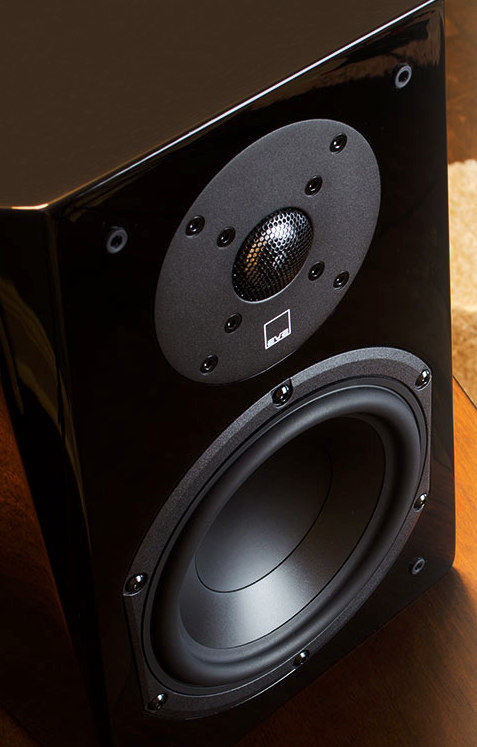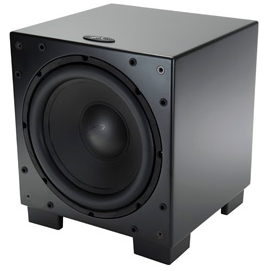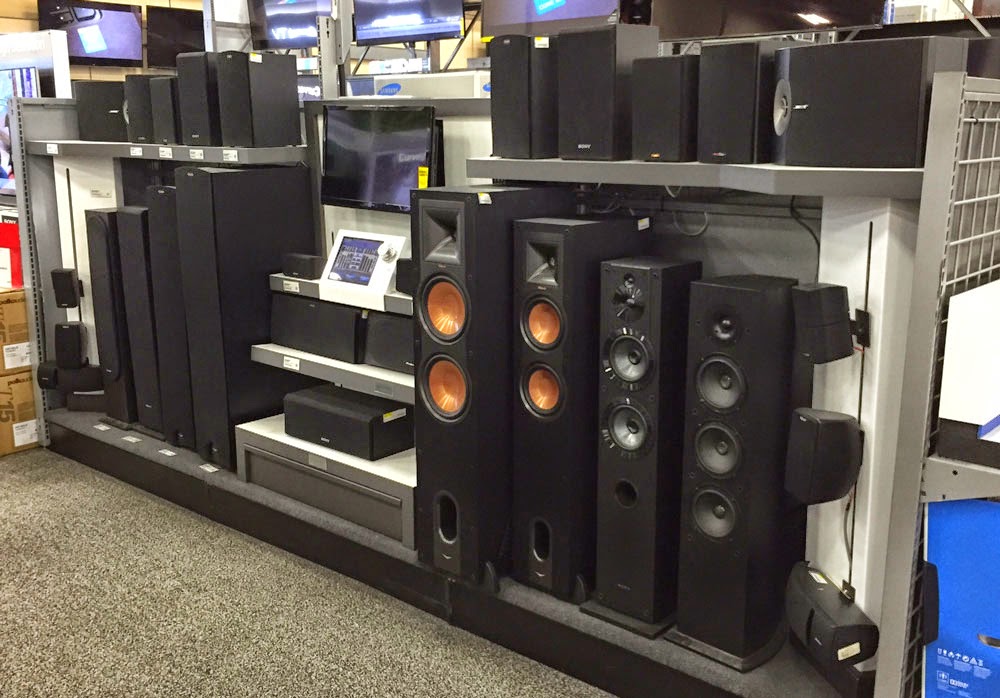For most of us poor audiophiles, spending tens of thousands of dollars on dream speakers isn't within our budgets. However, just because we can't afford really high end speakers doesn't mean we can't get some serious high-end sound from speakers under $1,000.
In my experience, once you can get past the $500 price hurdle, you start to have some good options available including some different speaker technologies that will offer you a variety of options to fit your speaker tastes.
The toughest thing is really knowing what models to put on a short list and where to look. I've assembled this list of audiophile-grade loudspeakers under $1,000 to make your life a bit easier. I've mixed in both full range and bookshelf speakers knowing that in some situations aesthetics or room limitations may dictate one style of speaker over another.
Magnepan MMG ($599/pair):
![]() |
| Magnepan MMG Magneplanar speakers |
Unlike conventional speakers that use a series of woofers and tweeters to create sound, Magnepans use a magneplanar film along with either a ribbon or quasi-ribbon driver, depending on the model. The Magnepan MMGs are a ridiculous value. They offer an incredibly life-like soundstage that is deep and wide unlike those traditional "box" speakers.
Magnepans are widely considered some of the best value in all high-end audio—and for good reason. Listen to a pair of these Magnepan MMGs and you'll experience some elements of really high-end sound for a fraction of the price.
To sound their best, Magnepans need some space to breathe. They don't look like traditional speakers so be sure to get your spouse's sign off ahead of time.
One thing to be aware of with Magnepans is that they like lots of power to sound their best. While you may be able to get away with driving these things with a traditional receiver, you are best off with a separate amplifier that is stable into a 4-ohm load.
If you want to learn more about Magnepan's magneplanar technology,
you can read more here.
Paradigm Classic Monitor 7 ($950/pair):
![]() |
| Paradigm Reference Monitor 7 Speaker |
Paradigm has a stellar reputation among the audiophile and home theater enthusiast crowd. The venerable Canadian speaker manufacturer designs all its speakers in Canada and uses the state of the art facilities at Canada's NRC.
The Monitor 7 is a no-frills solidly built 3-driver speaker featuring a 2-1/2 way bass reflex driver and a quasi-3rd order resistive port. Paradigm speakers have a reputation for their solid build quality, exceptional sound for the money, and overall value.
The monitor series is now in its seventh generation, representing refinement and longevity in a series that has been tested through time.
The Monitor 7 will play down to 48Hz and have a sensitivity of 91dB, making them a very easy to drive speaker for a variety of receivers and amplifiers.
If you're looking for a great floor-standing speaker that will give you years of pleasure the Paradigm Classic Monitor 7 may be just the speaker for you.
Focal Profile 908 Diamond ($3,000/pair on sale $999/pair):
![]() |
| Focal Profile 908 Diamond Speakers |
Why am I listing a pair of $3,000 speakers in the "best loudspeakers under $1,000? Well, that's because you can now get them for $999. The Focal Profile 908 Bookshelf speakers are nothing short of amazing. They have an incredible soundstage, great dynamics, and feature the inverted tweeter design found in their $5,000/pair towers. These speakers are by far the best value on this list and will give you some serious, serious high-end sound.
Focal is the renowned French speaker manufacturer and maker of the universally acclaimed Utopia Be series of speakers—regarded by many as some of the best speakers in the world. Many people also don't know that Focal makes the tweeters for Wilson speakers, which list from $18,000 all the way to half a million dollars.
These Profile 908 monitor speakers are amazing. They do equally well for music and movies and are incredibly revealing and detailed speakers.
You would need to spend three times the retail price of these speakers—in other words over $10,000—to get a speaker that will handily beat what these bookshelf speakers have to offer. If you have $1,000 to allocate, look no further than these speakers (assuming there are any left in stock!).
These speakers appear to be on closeout special at Music Direct in Chicago.
Here's the direct link to the deal.
Wharfdale Diamond 10.5 Tower Speakers ($949/pair)
![Close this window]() |
| Wharfdale Diamond 10.5 Tower Speakers |
Wharfdale is a brand well-known in audiophile circles. Their Diamond 10.5 tower speakers are an exceptional achievement. You get a three-way speaker with a 2-inch domed midrange and 6.5 inch bass driver all in a package that comes in under $1,000.
These are full-range speakers that will go down to 35Hz, allowing you to play orchestral music with all the impact and power without needing a sub.
The Wharfdale Diamond 10.5s are not the easiest speakers to drive coming in at 86 dB sensitivity and a nominal impedance of 6 Ohms. You'll need a good quality receiver or amplifier to make these speakers sound their best. If you're in the market for a full-range speaker that will give you the refinement and a great reputation for build-quality, then you should seriously consider the Diamond 10.5s.
PSB Image T5 Floor-Standing Speakers ($899/pair)
![]() |
| PSB T5 Floor-Standing Loudspeakers |
PSB is another venerable Canadian speaker designer. Named after it's founder and chief designer and his wife (Paul and Sue Barton—hence PSB) PSB speakers have a reputation for solid build quality and accurate sound.
The T5s have a 1" aluminum dome tweeter and two 5.25" woofers. The Image floor standers are very traditional in their design and lack the sleek cabinetry of their their more expensive cousins in the Synchrony and Imagine lines.
The performance of the T5s is impressive. They will go down to 35Hz so you can utilize them without a sub and get some good bass performance. At about 90dB sensitivity, the T5s will respond well to just about any receiver or amplifier.
Like Paradigm, Paul Barton tests his speaker designs at the anechoic chamber at Canada's NRC. You can find PSB speakers at dedicated high-fi dealers as well as select, reputable high-end online dealers like Crutchfield and Audio Advisor.
To keep the value proposition high and costs down, the Image series is manufactured in China under Paul's supervision. While making high-end speakers in China was unheard of 10 years ago, it's becoming more and more commonplace.
If you are looking for a full range speaker that can play down into the 35Hz range then your choice is really between the PSB, Klipsch (see below) and Wharfdale models. If you want to stick is a traditional tweeter design and the pair that's easier to drive then you may want to lean towards the PSBs.
NHT Classic Three Bookshelf Loudspeaker ($949/pair)
![]() |
| NHT Classic Three Bookshelf Speaker |
NHT's Classic Three Bookshelf speakers are a class-leading value proposition in the sub-$1,000 monitor speaker category. The speakers feature great build quality, aesthetics, and really deliver in the sound category.
Unlike most bookshelf speakers, the NHT Classic Threes are a three way, sealed design.
For their size, the bass response ranks among the best sub-$1,000 bookshelf speakers you can buy. Because you are buying NHT speakers direct or through a select network of online dealers, you are eliminating the costs and markup typically associated with traditional dealer-based distribution models.
While the Classic Threes won't compete with the Focal 908 Diamonds, if you can't get the Focals and are looking for some of the best sub-$1,000 bookshelf speakers out there, then you owe it to yourself to give the NHT Classic Threes an audition.
SVS Prime Bookshelf Speakers ($499.99/pair black ash finish and $599.99/pair in High-Grade Piano Black Finish)
![]() |
| SVS Prime Bookshelf Speakers |
If your budget is $500, then look no further than the SVS Prime Bookshelf Speakers. These bookshelf speakers are an unbelievable steal at only $499/pair for black ash or $599/pair for SVS' ridiculously gorgeous piano black finish. These are arguably the best +/-$500 speakers you can buy. They do lots of things right and give you a nice audible treat of some of the things audiophiles really love.
Build quality is typical SVS—it's fantastic. Their footprint is also small enough to fit into just about any decor and make they as WAF-friendly as speakers can get. They do a decent job top to bottom but if you really want to rock the house, then you'll need to pair them up with a good subwoofer.
You can read our review on these SVS Prime speakers here.
If you can afford to go up in your budget, then you should check out SVS' Ultra Bookshelf speakers below.
SVS Ultra Bookshelf Speakers ($998/pair)
![]() |
| SVS Ultra Bookshelf Speakers |
The SVS Ultra Bookshelf Speakers are the companion to the $2,000/pair Ultra Tower speakers. While the SVS Ultra Towers feature an MTM design, the Ultra Bookshelf speakers sport a traditional two-way speaker design.
The bass response on these speakers takes their cue from their larger siblings. They deliver incredible bass response and a large soundstage and good imaging.
The piano black finish on these models is something to behold and is almost mirror-like in its polish.
Like the NHT Classic Threes, you can buy the SVS Ultra Towers direct from SVS, which cuts out the middle-man markup and provides exceptional value. The Ultra Bookshelf speakers are a fairly easy to drive speaker at 87 dB rated sensitivity and an impedance of only 8 ohms. In the sub-$1,000 market the SVS Ultra Bookshelf and NHT Classic Threes take the crown for the best price/performance value speakers out there.
Revel Concerta M12 ($648/pair)
![]() |
| Revel Concerta M12 Monitor Speaker |
If you've followed my articles then you know I'm a big fan of the folks over at Harman International and their pioneering research into acoustics, psychoacoustics, and speaker design. While Revel, Harman's flagship audiophile speaker brand, makes speakers upwards of $20,000/pair, their Concerta series offers incredible sound value minus some of the exotic driver materials and aesthetic bells and whistles found in the cabinetry and styling of their more expensive models.
The Revel Concerta line has been around for several years and is certainly getting long in the tooth. Nevertheless, good sound quality never goes out of style.
The Revel Concerta M12 Monitor speaker is an exceptional value. You get good, quality, uncolored, accurate sound from a small package. While some will prefer to the better bass response of the SVS Ultra Bookshelf and NHT Classic Threes, the Revel Concertas will give you a real taste of high-end sound at a fraction of the price. If you can't afford the higher-priced SVS or NHT's you'll be supremely happy with the Revel Concertas.
Klipsch Reference RF-62-II ($998/pair)
![]() |
| Klipsch Reference RF-62-II |
Klipsch is long-known for their horn-loaded tweeter designed speakers. The RF-62 model is a full-range speaker that goes down to 35Hz.
It has an incredible sensitivity rating of 97 dB that makes this model able to be driven to loud volumes and exhibit great dynamics with very little amplification power behind it. Many fans of tube amps love horn-loaded tweeter designs exactly because of the incredible sensitivity that horn-loaded designs offer.
The Reference RF-62 features dual 6-1/2 cerametallic woofers in a ported design. As with most speakers in this sub-$1,000 price range, you get a no-frills cabinet with a veneer finish.
Horn-designs aren't for everyone. Yet, those who appreciate horn-loaded tweeters swear by them because of the unique things only a horn-design can give you.
If you haven't listened to a horn-tweeter then you probably owe it to yourself to sample the Klipsch models.
Martin Logan Motion 40 ($949.48)
![]() |
| Martin Logan Motion 40 Tower Speakers |
As I mentioned earlier, when you can look at speaker options between $500 and $1,000 it opens up the opportunity to explore different speaker designs. Martin Logan, the company best known for it's electrostatic speaker designs, is now a subsidiary of Paradigm. While you won't get true electrostatic model options at the $1,000 price point, you will find Martin Logan models that feature their folded motion tweeter design.
Martin Logan's folded motion tweeter is a special diaphragm that handles the high frequency notes that then crosses over to traditional woofers. To some, the folded motion tweeter design is more akin to a ribbon tweeter in its ability to react quickly and move lots of air when compared to a traditional dome tweeter design.
Unlike many of the models listed here, you can audition the Martin Logan Motion series at a local Best Buy that features a Magnolia Home Theater. A word of caution, if you choose to audition the Martin Logan Motion series speakers make sure they are setup properly. I've heard several speakers at a Magnolia store that sounded terrible because of how they were setup (improperly) in the store.
Bowers and Wilkins 685 S2 Bookshelf Speakers ($700.98)
Rounding out my list is the Bowers and Wilkins (B&W) 685 S2 Bookshelf speaker. B&W is a well known speaker designer—especially for their high end models. One thing with B&W speakers is that you won't always get the best value. These 685 bookshelf speakers won't give you the deepest bass (they only go down to 52Hz), they won't give you this feature or that feature but whatever they do within their limits they do well.
With the lower-end B&W speaker models, you don't get their exotic and well-regarded diamond tweeter but you will get a 6-1/2" woven kevlar woofer and double dome aluminum tweeter.
Like the Martin Logan models, you can also audition select B&W models like the 685 at your local Best Buy featuring a Magnolia Home Theater section. But like I mentioned earlier, if you do choose to audition the B&W bookshelf speakers, be sure they they are setup properly and driven by a high quality receiver. The stock setup at Best Buy isn't conducive to giving you an optimal audio auditioning experience.
Zu Omen Dirty Weekend Speakers
If you could get a new speaker cabinet, plus used drivers and a $500 savings then you'd have the Zu Omen Dirty Weekend speakers. These 36" highly-efficient speakers (97dB!) will play from 35 - 25kHz and have a very easy-to-drive impedance of 12 ohm. Zu says that the Omen Dirty Weekend use previously owned or used full-range drivers. These are drivers that customers have returned who have upgraded to their new high-output nanotech drivers. The used drivers have ben fully cleaned, tested, measured, and matched into identical pairs. The used drivers are put into new ew cabinets made from North American high density composite wood plate (Comp-60), machined on state-of-the-art CNC mills. Omen uses real wood veneer laid-up and pressed at the plywood factory and not glued after assembly. Zu says that this ensures your finish will not lift or warp, and it yields the flattest surfaces and tightest seams. The Omen Dirty Weekend speakers are available directly from ZuAudio.























































































